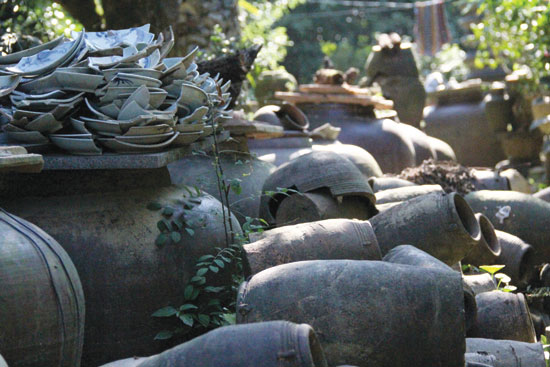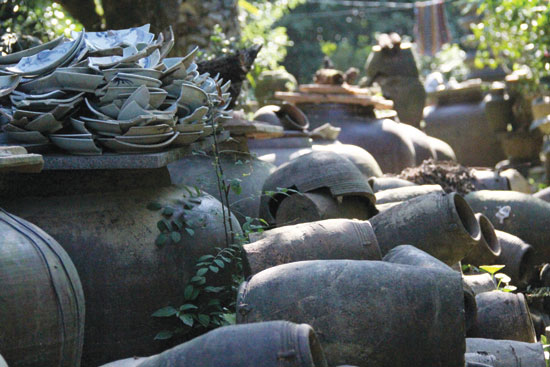(No.3, Vol.6,Apr-May 2016 Vietnam Heritage Magazine)

Hue has a complete set of antique terracotta that could tell stories of the country’s former feudal capital from pre-history. The collection has been considered a great treasure of Hue, since the job of collecting and gathering it is not easy. But Hue is lucky to have it, with more than two antique items representing for each historical stage. In addition to terracotta artefacts, the collection also contains metal and stone items that could help mirror the information taken from terracotta.
From 1802 to 1945, Hue was the capital of the feudal kingdom under the Nguyen Dynasty. The relics left by the dynasty now are UNESCO heritage sites and they serve as the base for local tourism. Many people assume the history of Hue consists of only the kings.
Antiques excavated from
the Huong riverbed have become significant
However, the collection, which is named ‘Searching for the lost time,’ helps prove that Hue history can be traced back 4,000 years. It also supplies items dated back to the Sa Huynh civilization of 3,000-2,000 years ago, in the Champa age of the 2nd century, during the time of the Han invasion, and under the Nguyen Dynasty.
On the cultural side, the collection is meaningful for deep research studies into customs such as Vietnamese tea drinking or areca nut chewing. It also helps to trace the diplomatic relations between old Vietnam and different Chinese dynasties, Thailand and European countries. And a fact that amazes most people who get to know about the collection is that it has been conducted for 40 years by an individual who has never been trained in archeology or scientific research study.
Noticing gaps in historical research study, local man Ho Tan Phan trained himself from books in the 1970s before he started collecting things in 1977. By 2016, the researcher had terracotta artefacts covering almost all the space at his home. But Phan was not satisfied with only books. According to him, Vietnam had its first writings of history in books on the Tran Dynasty (1225-1400) by historian Le Van Huu. Thus the transcript books could not cover all from pre-history stage. Phan said that once we can interpret what was conveyed by the terracotta items, we would know more about history of the locality.
Phan argued that artefacts used in the country were handmade Vietnamese products that served various daily purposes, thus they carried abundant cultural content.
After collecting terracotta for research, Phan provided a lot of valuable information read from artefacts found in the riverbeds. Phan said underwater archeology reflected part of the nation’s history from prehistoric times. Underwater archaeology had greater importance than underground excavations, since each underground site could tell about only one or two layers of history, while underwater archaeology presented all of our history, according to Phan. He emphasized that underwater archaeology reveals the length of the nation’s history, from Champa to Greater Viet and periods the country was temporarily ruled by the Chinese and Japanese.
These ideas drove Phan’s dedication to the job of collecting underground water items, which consumed almost all his time and energy, but resulted in a useful collection for both international and domestic researchers. Many scientists managed to find proofs for their scientific research studies from Phan’s collection, which they said they could not get any from other sources. Phan’s home was considered as a museum of underground artefacts.
Phan had a dream of making his home a museum that facilitated research of all people in need of information and knowledge from his collection, which is now located at 28/5 Cao Ba Quat Street in Hue City. The dedicated researcher also wanted the country’s underwater archeology to expand, with focus on human resource development and scientifically structuring the sector. With a collection that reflects every stage of life and serves every activity from daily to worshiping or cultural events, Phan expected the sector to highlight the benefits from the collection to attract attention of candidate researchers in need of rare and unique information.

Terracotta artefacts in a corner at
Mr. Ho Tan Phan’s garden

A collection of
Vietnamese Chu Dau pottery gathered from
the riverbeds by Mr. Ho Tan Phan

The late
researcher Ho Tan Phan was working on broken
pottery picks.

